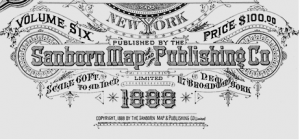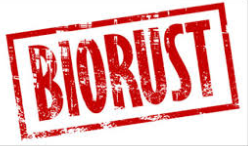December 05, 2017
Thread Isn't Ink
Teach your customers to work around the limitations of embroidery to keep them from disappointment and save yourself some headaches.
The harsh reality in the wonderful world of embroidery is: Thread is not ink. Because of this, some logos are simply not well-suited to embroidery and will cause major dilemmas for your digitizer. There are tricks of the trade that can often provide for some creative workarounds, but there are times where we have to work within the limitations of our medium and have to say no. Small lettering is the No. 1 villain, but the below examples are just as problematic for even the best digitizers in the world.
1. Too Much Lettering

Digitizers really do get logos like this all the time with requests to fit the logo in areas as small as 2.5 inches. Part of our role is to train customers as to what will and won’t work. Lettering is particularly challenging because everyone knows what a letter looks like, and even one stitch out of place can make a letter look wrong. Certain substrates will accept small lettering better than others, but generally speaking, 4mm is the smallest Arial (sans serif) letter that can be effectively digitized. Lettering smaller than that will not form quality stitches and/or the holes in letters like A, B, D, O, P, Q, R, (for capital letters) a, b, d, g, o, p, q, s (for lower case) will fill in and look like blobs.
2. Blending

Embroidery is a solid medium, and programmers cannot blend threads to copy the effect shown below. Can we fake it? Yes, but whether or not the end product will be accepted is entirely subjective and depends on the end user’s expectations. Effects like this are meant to mimic reflectivity. Embroidery thread by its nature will shine and reflect light, so while this effect may be necessary in print, in embroidery this may happen all by itself.
3. Transparent Effects

Since thread is opaque, you cannot see something that is on a layer behind the thread. Because of that, images like this are virtually impossible to emulate in embroidery. Objects behind windows (like the detail behind the windshield of a vehicle) are impossible to portray behind the “glass version” of the thread. If the intent is to show the interior of the vehicle, then the glass can’t be effectively emulated.
4. Distressed Effects

Designs like BIORUST do not work well for embroidery. Needle and thread do not have enough resolution to duplicate this effect.
5. Logos on Hats

In general, the maximum height for a hat design is 2.25 inches tall. On some machines, you can push this to 2.5 inches, but whenever you push the extreme limits of hat embroidery, you’re asking for trouble in the form of damaged product and broken machines.
Designs like this are beautiful but they're not friendly to cap embroidery. There is too much small lettering in too small of a space to allow for quality embroidery. Digitizers are presented hat designs like this all the time, and we’re put in the position of being the bad guy because we have to say no, not because we don’t want the work, but because we want you to be able to produce a quality product for your customer.
The question then might become, “How can we make this work?” For this design, the answer is to delete the outer ring and small lettering. The more inspired companies have multiple versions of their logos. These companies have been down this path, and at some point, someone has explained to them why their logo won’t work on a cap. You can be the consummate professional if you understand the limitations of the medium and offer options. Explain to the end user why the design will not work and the advantages to simplifying a design like this. You may earn the opportunity to sell more product also. Sell them on putting the full logo on something like a jacket or polo, but the simplified logo on a hat. In the end, you’ll sell a superior product, your customer will be happier and your opportunity to earn more sales will increase dramatically. If you dig your heels in and insist on fitting this full logo on a hat, you’ll wind up with a substandard product and most likely a large number of damaged hats.
The only absolute I have run across in commercial embroidery is there are no absolutes. There are ways to simulate blends and given enough room you can program a design like the ABC logo to look very much like the art. You can even find “panel programs” for embroidering large designs on to hat panels. The point is, if you see logos like these you will be in a much stronger position to get in front of production issues instead of making excuses after the fact.
***
Steve Freeman is the managing partner of Qdigitizing.com. He has been a professional digitizer since 1989 and is trained on Melco, Wilcom and Pulse software systems. Prior to Qdigitizing, he was an embroidery manager at Zazzle.com, and before that, he owned and operated a 60-head embroidery company for 15 years. You can reach him at steve.freeman@qdigitizing.com or (877) 733-4390.